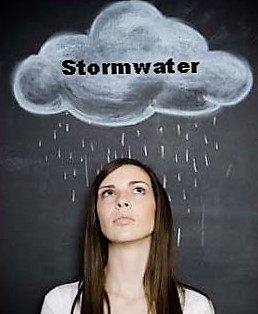Stormwater 101: Frequently Asked Questions
Q. Where does the water in the LWDD canals come from?
A. Stormwater (rainfall) is where LWDD receives most of its water supply for the canal system. However, during dry periods with low rainfall, LWDD may rely on the regional system of canals, Water Conservation Areas and sometimes Lake Okeechobee as a source of supplemental water.
Q. Who owns the water within LWDD’s canals?
A. In Florida, water is not a property right but rather a resource ‘shared in common’ by landowners. Groundwater and surface water (canals) are held in trust for the benefit of its citizens. Ownership of the land adjacent to a water body does not provide ownership of the water nor the right to use the water. The right to use water is regulated by the State of Florida through regional water management districts. In our area, the entity responsible is the South Florida Water Management District.
Q. What is a drought?
A. While it is relatively easy to define what a hurricane or an earthquake is, defining a drought is more subjective. Droughts do not have the immediate effects of floods, but sustained droughts can cause economic stress throughout an area. The word “drought” has various meanings, depending on a person’s perspective. To a farmer, a drought is a period of moisture deficiency that affects the crops under cultivation. Even two weeks without rainfall can stress many crops during certain periods of the growing cycle. To a meteorologist, a drought is a prolonged period when precipitation is less than normal. To a water manager, a drought is a deficiency in the water supply that affects water availability and water quality.
Q. How does drought affect private and municipal well fields?
A. The water level in the underground aquifer that supplies a well does not always remain the same. Seasonal variations in rainfall or manual pumping may affect the height of the underground water levels. If a well is pumped at a faster rate than the aquifer is recharged by rainfall or other underground water flows, then the water level in the well can be lowered. This can happen during drought, due to the deficit in the amount of rain.
Q. Where can I find information about water restrictions in my area?
A. To promote responsible water use and protect our valuable water resources, Palm Beach County observes the South Florida Water Management District’s Year-Round Landscape Irrigation Conservation Measures Rule. Landscape irrigation is restricted to three days a week before 10 a.m. or after 4 p.m. Several municipalities within the Lake Worth Drainage District’s jurisdictional boundaries have adopted their own, more stringent water and irrigation conservation ordinances. Please check with your local municipality for their specific water use rules. For additional information on current water restrictions, visit the South Florida Water Management District’s website at http://www.sfwmd.gov




